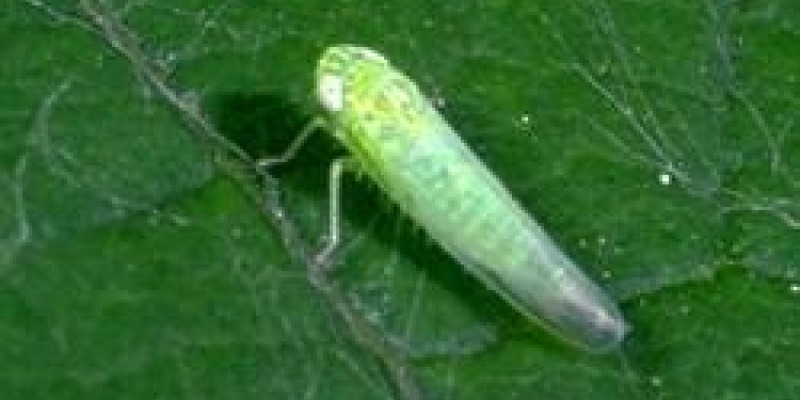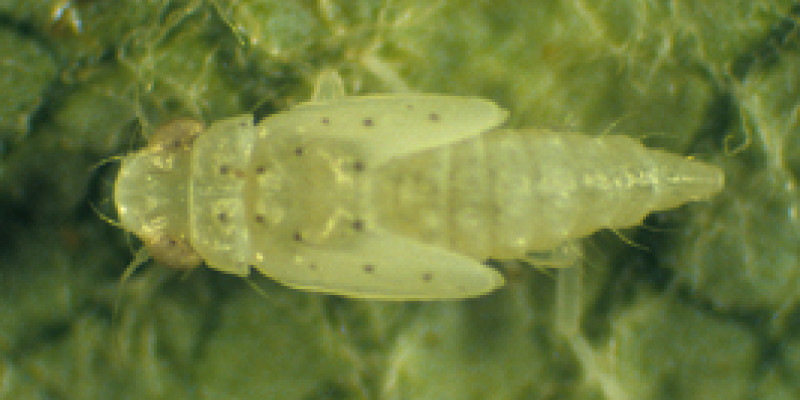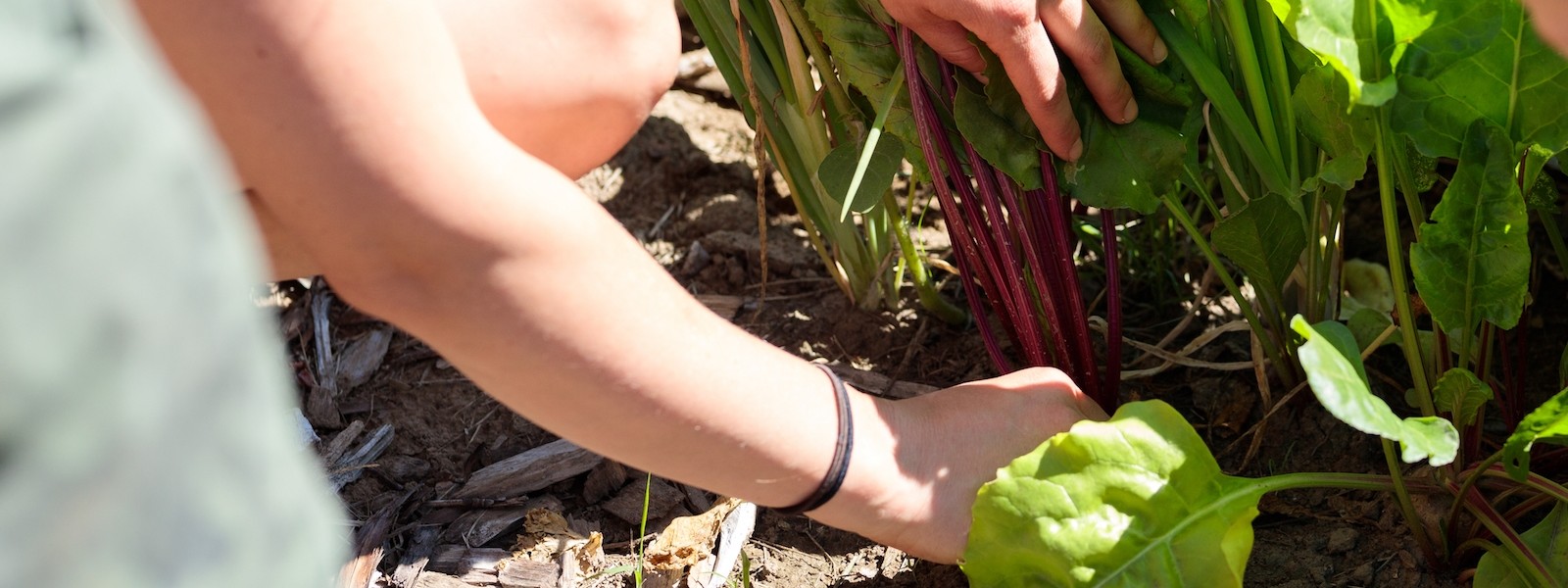Pest: Leafhopper
If your legume leaves are turning yellow, potato leaves are turning brown or your rose leaves are stippled with white, you might have leafhoppers.
Adults are wedge-shaped, slender, green or brown and are 1/10-1/2” long. Some have brightly colored bands on wings. All jump rapidly into flight when disturbed. The nymphs are pale and wingless, but similar to adults.


Life Cycle
Overwintering adults start laying eggs in spring when leaves begin to appear on trees. Some species do not survive winter, instead they migrate from the south every summer. Females lay eggs in leaves and stems. The eggs hatch in 10-14 days and the nymphs develop for several weeks. Most species have 2-5 generations per year, overwintering as adults or eggs.
Plants They Attack
Species can be somewhat specific to certain host plants. As a group they feed on leaves of a wide variety of plants including many types grasses, flowers, vegetables, fruit trees, shrubs, deciduous trees, palms and weeds. The rose leafhopper, Edwardsiana rosae (Linnaeus), feeds primarily on plants of the rose family, although foliage of other woody plants (blackberry, Cornus, oak, Prunus, Populus, raspberry, Ulmus, Acer and others) serve as food. The potato leafhopper, Empoasca fabae (Harris), feeds on legumaceous plants like alfalfa, as well as on apple, birch, chestnut, maples, and others.
Spot the Damage
Adults and nymphs suck juices from stems and undersides of leaves of most fruit and vegetable crops, also some flowers and weeds. Their toxic saliva distorts and stunts plants and causes tipburn and yellowed curled leaves with white spots on undersides. Pests may spread viral diseases as they feed.
See some of the types of damage that can occur on potatoes here.
Preventative Actions
- Dislodge the insects by spraying affected plant parts with a sharp stream of water.
- Remove garden trash and other debris shortly after harvest to reduce over-wintering sites. Apply diatomaceous earth to plants and/or spot treat with insecticidal soap to keep pest populations under control.
- Block access to susceptible plants by placing a lightweight spun fabric row cover tunnel (aka: remay cloth) over them before the insects arrive. Seal the edges of the remay tunnel with soil.
- Attract native predators and parasites by planting pollen and nectar plants such as yarrow or herbs which will flower like thyme, cilantro, dill, lavender, hyssop, chamomile etc.
Live Biological Controls
Commercially available beneficial insects such as ladybugs, lacewing, and minute pirate bugs are all voracious predators of both the egg and young larval stage.
Organic Product Controls
Use insecticidal soap, neem, or diatomaceous earth.
Sources
CCF staff
Good Bug, Bad Bug by Walliser (2008)
The Organic Gardener’s Handbook by Ellis and Bradley (1996)

